How To Transform Your Business To Stay Ahead In The Game

Small businesses are struggling.
Business owners don’t take vacations because they are scared to death their business will fall apart.
Budgets are shrinking with growing competition.
This is quite possibly something that you are experiencing or you have experienced.
- I am feeling stressed, overwhelmed and pulling myself in a hundred different directions at once
- I have enough customers
- I am looking to scale to a greater level
- I have tasks that I don’t enjoy doing
You need transformation and your organization needs to transform too.
Why you need to outsource
Outsourcing can provide an extraordinary opportunity to reduce your operational costs.
You don’t need to employ staff to complete these undertakings
- No fixed salaries to be paid
- No salary-related taxes
- No expenses of training new staff
- No compelling reason to buy dedicated hardware and software
- Don’t have to produce additional work-space
- No Insurance or Health benefits
According to Michael F Corbett outsourcing is not just a way to reduce costs; it is an essential element for business excellence.
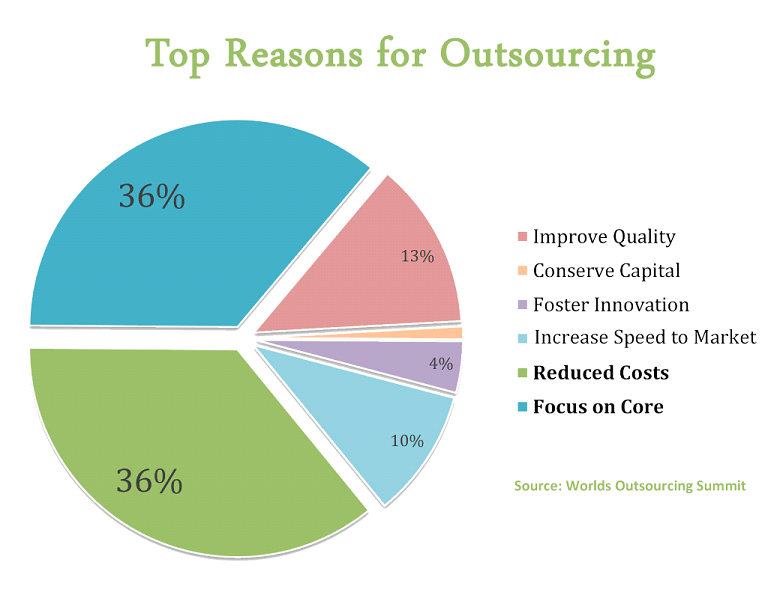
Research and define your goals
Before you start to define the outsourcing process with functions, you need to define your company’s core competencies.
How do you identify your company’s core competency?
- Isolate your key abilities
- Compare yourself with other competitors with the same skills
- Find the capabilities your customers truly value
- Defines objectives for competence building
- Outsource or divest non-core capabilities to free up resources

Defining your company’s core competencies will help you define your business goals. This will allow you to determine what to outsource and what not to outsource and key outsourcing considerations.
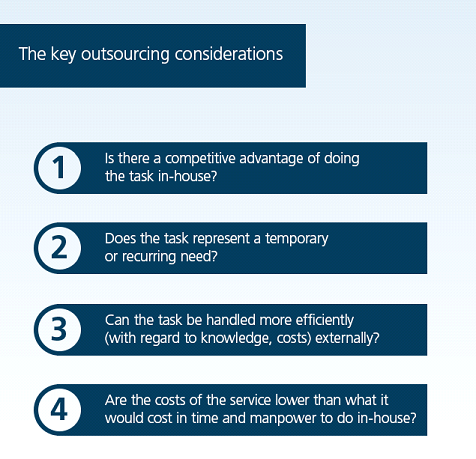
To assist you in removing the guesswork and set the right goals for your outsourcing decision, here’s a free goal-setting template.
What is your core focus
Outsourcing can have a significant impact on your bottom line.
It can reduce costs, bring expertise to your business, and foster innovation and other vital tasks.
But there are risks, too.
You could lose control of proprietary information, or end up with products or services that don’t meet your company’s quality standards.
Are you sure that you are making the right decision?
Don’t stop there.
You should look at using the Outsourcing Decision Matrix to identify which tasks or processes you should keep in-house, and which you can safely outsource.
The two most important questions are:
Does the task in question give your business a competitive advantage?
How much does the task contribute to the smooth running of your organization? And how much disruption does it cause if it’s done badly?
Outsourcing Decision Matrix
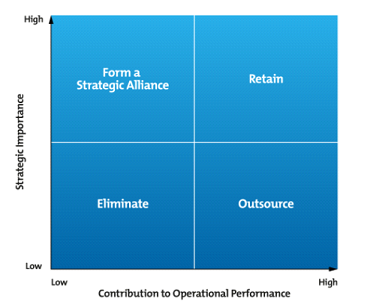
Form a strategic alliance is a high complexity, low importance quadrant. It can be outsourced to a trusted partner easily.
Retain is a high complexity, high importance quadrant. Retain these tasks in-house.
Outsource is a low complexity, high importance quadrant. These can be outsourced with little risks.
Eliminate is a low complexity, low importance quadrant. Think about eliminating these tasks completely.
Now you know.
What are you great at?
What do you lack?
Here’s an example for the list to give you some direction so you can create your own.
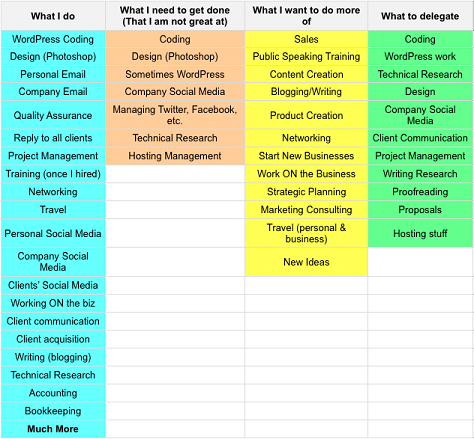
This is time consuming.
It will give you a clear road map of where you are, where you want to be, and what’s holding you back.
Hire action-takers who can get the job done
No business has ever taken off based on ideas alone.
It is execution that transforms an idea into a legitimate, revenue-generating business.
You want to find a company that is capable of accomplishing things instead of just spouting off ideas.
It is imperative that you have team members with the agility and ability to deal with problems quickly and efficiently.
The ability to innovate and to come up with creative solutions is a critical asset.
Many entrepreneurs wait until things go wrong, then scramble to get people to fix it.
Think about the potential challenges from the outset, and build a team that can handle whatever comes their way.
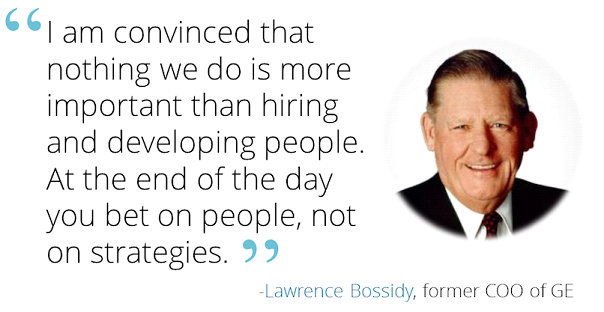
If you want to be successful, you need to carefully consider who you work with.
It can be quite a challenge to determine who’s right and who’s not.
You need talented people that can get the job done, but you also want them to fit your culture.
To effectively use them, keep these tips in mind:
- Be decisive
- Pay fairly and on time
- Remember they are not your full-time employees
- Give honest feedback
How to find the right action-taker?
The key is: always keep alternatives.
You should make a list of vendors.
Where to find them?
Here are some ways.
- Referral from your friends and business partners.
- Google and other search engines
- Online jobs and project boards
- Trade associations / Trade shows.
What to ask them?
Here are some questions.
- How stable and well funded is it?
- Has it got a satisfied customer base?
- Has it successfully dealt before with the same needs yours?
- What kind of software development methodology is followed?
- What is the typical development team size?
- How does company differ from its competitors?
- What is the length of support covered after project is completed?
Ray Carter, director of DPSS Consultants, first outlined his Seven Cs of Supplier Evaluation in a 1995 article in “Purchasing and Supply Management.” He later added three new Cs to the model.
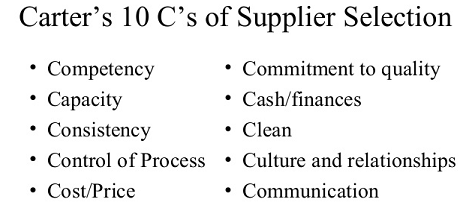
Used as a checklist, the 10 Cs model can help you evaluate potential suppliers in several ways.
Next is request for sample of work.
Prepare an Request for proposal and analyze them.
Compare, choose and shortlist the robust, well funded outsourcer.
Know how to measure success
More than half of outsourcing clients fail to fully utilize analytics to effectively track and measure success.
Remember… without data, it’s just an opinion.
According to Foresters Services Survey, Q3 2011 more than 50% of the biggest challenges to the clients is due to the vendors lacking business process expertise and culture fit.
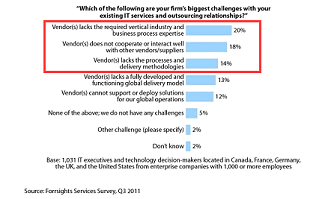
You need to develop metrics before starting the vendor selection process.
Metrics are measure of output or results.
Most important metrics for measuring the success is:
- Service level
- Service quality
- Vendor management issues
- Total cost reduction
- Unintended consequences
- Better use of resources
What’s your best advice for the transformation your business needs from you?

Post a Comment